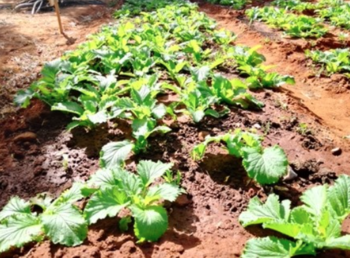In This Story

Adolescence is an important period of life for healthy growth. Malnutrition during this seminal period may have long-term adverse effects on health and development. In sub-Saharan Africa, there is a lack of nutrition programming for adolescents. Adolescent malnutrition represents an urgent issue in sub-Saharan Africa, which has a long history of undernutrition and a rising issue of overweight and obesity.
Findings from a new study suggest that a four-component school-based nutritional intervention package improved the diet quality of adolescents and their household members and reduced adolescent malnutrition, which includes undernutrition and obesity. The intervention is comprised of four components: school meals, nutrition education, school gardens, and community workshops.
“Our findings highlight the transformative potential of schools as a promising platform to combat adolescent malnutrition in all its forms. This study provides evidence of the feasibility and potential effectiveness of the four-part nutrition intervention package for reducing adolescent malnutrition,” said Wang, corresponding author and and joint-first author with Leonard K Katalambula of the University of Dodoma. Wafaie Fawzi from the Harvard T.H. Chan School of Public Health is the principal investigator.
Researchers conducted a cluster randomized controlled trial to evaluate the impact of an integrated, school-based nutrition intervention package for adolescents in Dodoma, Tanzania, over one academic year. Two schools received the full four-part intervention package, two received a partial intervention package that did not have the school meals component, and two received no intervention. The intervention packages aimed to improve adolescent nutrition by providing nutritious food, improving nutritional knowledge and practice, and building nutritional and agricultural capacities in households and communities.

Baseline data on adolescent and parental outcomes were collected at the beginning of the academic year before the implementation of any intervention. End-line data on the same study outcomes were collected at the end of the academic year. At the end of the school year, adolescents and parents in the intervention schools had better diet quality compared to those in schools with no intervention. The benefit of the intervention on parental diet quality suggests promising spillover effects of the interventions into households and communities. Adolescents in the intervention schools also experienced low risk of overweight or obesity and higher nutrition knowledge, compared to adolescents in the no intervention schools.
“Previous school-based nutrition interventions were often implemented and evaluated as standalone programs without harmonization into a package or without adequate integration into the local food environment. These modifications improved the interventions' scalability and sustainability,” said Wang. “To fully realize the transformative potential of secondary schools and maximize the impacts of evidence-based interventions, there is a critical need to combine standalone intervention components into intervention packages that are well-integrated into the school environment.”
“Meals, Education, and Gardens for In-School Adolescents: A Cluster Randomized Trial of an Adolescent Nutrition Intervention Package in Tanzania” was published online in April 2024 in the Journal of Adolescent Health. This study was supported by the IZUMI Foundation. Abbas Ismail, Augustine Malero, and Said Vuai from the University of Dodoma; Andrea R Modest, Amani Tinkasimile, and Mary Mwanyika Sando from the African Academy of Public Health; and Dayana Bray and Haley Cinq-Mars from Harvard University are additional co-authors on the paper.
